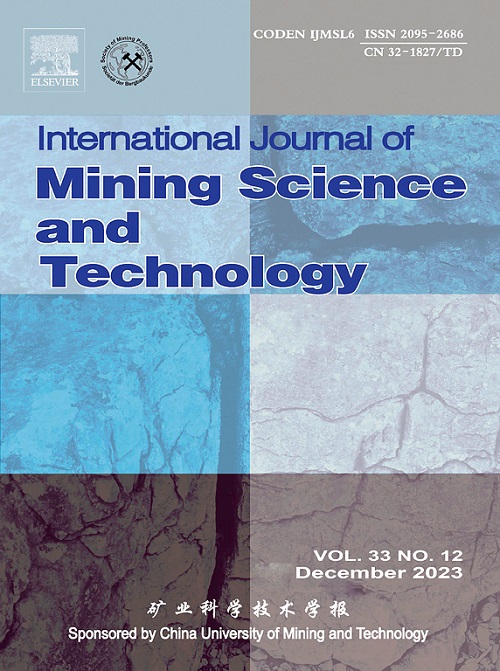A new technical approach for real-time tensile strength testing of high-temperature granite based on micro-tensile testing technology
IF 13.7
1区 工程技术
Q1 MINING & MINERAL PROCESSING
International Journal of Mining Science and Technology
Pub Date : 2025-08-01
DOI:10.1016/j.ijmst.2025.07.003
引用次数: 0
Abstract
The tensile strength of rocks under real-time high-temperatures is essential for enhanced geothermal system development. However, the complex occurrence and deep burial of hot dry rocks limit the quantity and quality of standard samples for mechanical testing. This paper compared the tensile strengths obtained from Brazilian splitting tests on standard samples (with a diameter of 50 mm and a thickness of 25 mm) and micro-tensile samples (with a diameter of 50 mm and a thickness of 25 mm) of two types of granites. A power-law size effect model was established between the two sets of data, validating the reliability of the testing method. Then, miniature Brazilian splitting under real-time high-temperature, combined with X-ray diffraction (XRD) revealed temperature-dependent strength variations and microstructural damage mechanisms. The results show that: (1) The comparison error between the tensile strength obtained by the fitting model and that of the measured standard samples was less than 6%. (2) In real-time high-temperature conditions, tensile strength of granite exhibited non-monotonic behavior, increasing below 300 °C before decreasing, with sharp declines at 400–500 °C and 600–700 °C. (3) Thermal damage stems from the differences in the high-temperature behavior of minerals, including dehydration, phase transformation, and differential expansion.
基于微拉伸测试技术的高温花岗岩抗拉强度实时测试新技术途径
岩石在实时高温下的抗拉强度对地热系统的开发至关重要。然而,干热岩的复杂赋存和深埋限制了力学试验标准试样的数量和质量。本文比较了两种花岗岩标准试样(直径为50 mm,厚度为25 mm)和微拉伸试样(直径为50 mm,厚度为25 mm)的巴西劈裂试验的抗拉强度。在两组数据之间建立了幂律大小效应模型,验证了检验方法的可靠性。然后,结合x射线衍射(XRD),实时高温下的微型巴西分裂揭示了温度相关的强度变化和微观结构损伤机制。结果表明:(1)拟合模型得到的抗拉强度与实测标准试样的对比误差小于6%。(2)在实时高温条件下,花岗岩的抗拉强度表现出非单调性,在300℃以下先上升后下降,在400 ~ 500℃和600 ~ 700℃时急剧下降。(3)热损伤源于矿物高温行为的差异,包括脱水、相变和差动膨胀。
本文章由计算机程序翻译,如有差异,请以英文原文为准。
求助全文
约1分钟内获得全文
求助全文
来源期刊

International Journal of Mining Science and Technology
Earth and Planetary Sciences-Geotechnical Engineering and Engineering Geology
CiteScore
19.10
自引率
11.90%
发文量
2541
审稿时长
44 days
期刊介绍:
The International Journal of Mining Science and Technology, founded in 1990 as the Journal of China University of Mining and Technology, is a monthly English-language journal. It publishes original research papers and high-quality reviews that explore the latest advancements in theories, methodologies, and applications within the realm of mining sciences and technologies. The journal serves as an international exchange forum for readers and authors worldwide involved in mining sciences and technologies. All papers undergo a peer-review process and meticulous editing by specialists and authorities, with the entire submission-to-publication process conducted electronically.
 求助内容:
求助内容: 应助结果提醒方式:
应助结果提醒方式:


